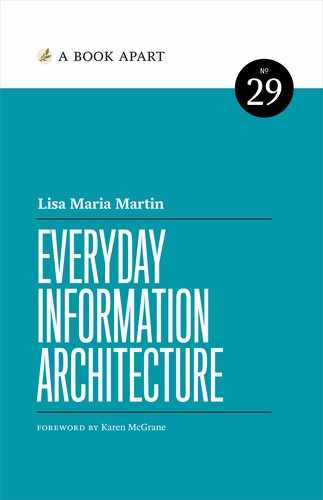Introduction
Walter Plecker was an asshole.
In the 1920s, he was registrar of Virginia’s Bureau of Vital Statistics, the state government office that controlled birth, death, marriage, and divorce records (http://bkaprt.com/eia/00-01/). As a frothing-at-the-mouth white supremacist, Plecker was terrified of interracial marriage. Its very existence, he insisted, was the result of poor categorization: white people were marrying non-white people only because the government hadn’t labeled them “correctly.”
Plecker decided that he could use bureaucracy to change this, and he was right: all he had to do was relabel Virginia’s racial categories, and racist laws took care of the rest. He reduced the number of racial identity categories to just two, then altered and enforced documentation to reflect his definitions.
This meant that a very small and specific group of people were labeled white, and everyone who fell outside of Plecker’s narrow view were not—and their lives changed accordingly. The government saw them differently, identified them differently, treated them differently. They no longer had access to the same public spaces, the same schools, the same services and safety nets afforded to white people. Marriages were invalidated. Children were separated from parents. Virginians lost agency over who they were—all because Walter Plecker changed a label.
Changing a label is a design decision—one calculated, in this case, to disenfranchise specific human beings.
Now, most of us don’t have Walter Plecker’s job. We are, instead, designers, developers, copywriters, strategists. We work on the web, and we may not think our work carries that same weight.
I’m here to argue that it does. Whatever our role, we are designers of information. Our choices alter the presentation and flow of human knowledge. We control how people find, understand, and use information in every facet of their lives.
We must be very, very careful.
Our work, our responsibility
“The creative organization of information creates new information,” wrote architect Richard Saul Wurman. This axiom is at the core of our work. When we organize information—that is, when we structure it, order it, display it, label it, connect it—we alter it. We change how information will be perceived, for better or for worse.
That’s a lot of power—power that we don’t always recognize is ours. And when we don’t recognize it, we can’t be careful about its impact. We risk building sites that aren’t clear, usable, or inclusive. We risk alienating, even harming, users.
And users have enough cards stacked against them already. Information literacy is low, stress is high, distractions are abundant, and capitalism is a grind. Everyone—users and web workers alike—is trying to navigate an internet that is both mandatory and hostile, that craves our data but cares little for how it makes us feel.
As builders of the web, we have a responsibility to change that. And we can—by being more communicative, more ethical, and more empowering in our organizational choices.
The goal of this book is to help you do just that. You may not consider yourself an information architect, but maybe you’ve been tasked with assessing and categorizing your site’s content. Or you’ve just jumped in on an unfamiliar sitemap project. Or you’ve never built a taxonomy before. Wherever you’re coming from, the principles and practices of information architecture can help you craft more thoughtful information spaces.
Our journey won’t be exhaustive when it comes to information architecture, but we will look at the everyday work of the web through a structural lens. In Chapter 1, we’ll discuss the importance of organizational frameworks. In Chapter 2, we’ll learn how content can inform strategy and scope. Chapter 3 examines the building blocks of sitemaps, while Chapter 4 shows us how to put them together. In Chapter 5, we’ll ensure that users can find their way, while Chapter 6 explores the applications (and implications) of taxonomies.
All the while, we’ll be thinking about why we’re doing this at all: to help people find, understand, and use information—information that can make a difference in their lives. Because if we aren’t going to use our power for good, who will?
Three, two, one, let’s jam.
